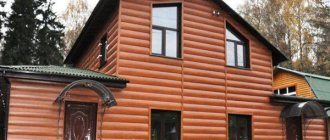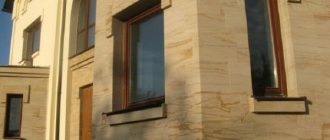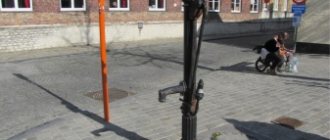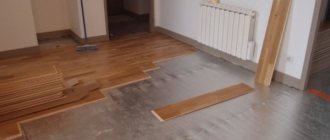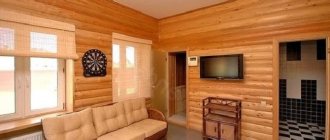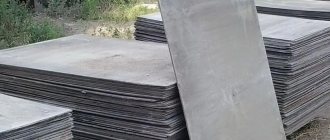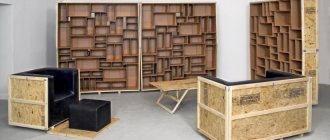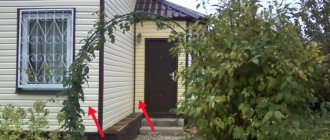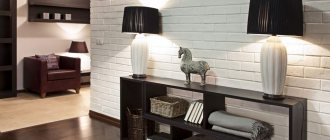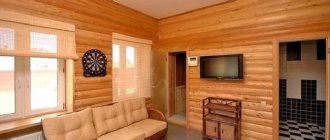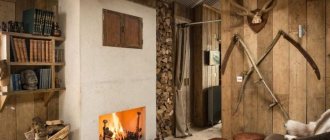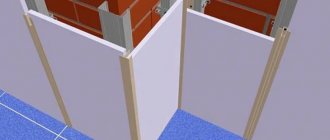Siding sections, which are used to cover the walls and ceilings of a building, are almost the most popular in the building materials market.
The variety of their design, colors, materials of manufacture presented by manufacturers confuses the buyer: such a wide range can get confused.
In addition, the ability to install panels almost anywhere in the room is due to the characteristics of the siding panels. And the price of this unique finishing material competes with the most popular facing materials.
Interior siding, pros and cons
Siding is a structural panel that is used for finishing walls, balconies, bathhouses and other low-rise buildings, both externally and for internal cladding.
Decorative sheets differ both in quality characteristics and in purpose (external and internal).
ATTENTION!
Panels for interior decoration have different structures, shapes, sizes, and a wide selection of colors and textures. Indoors, siding sheets can be used both on walls and ceilings.
Advantages of indoor siding:
- Lightness of elements;
- easy installation;
- mechanical stability;
- heat resistance;
- Do not over-level the surface under the siding;
- a wide range of;
- easy to care for;
- the ability to hide communications behind panels;
- durability;
- color fastness;
- the ability to replace damaged panels without much effort, without removing the entire paneling;
- possibility to install insulation on the surface of sections;
- reasonable price of the material.
The disadvantages of siding include the relative fragility of the material . With strong mechanical action on the coating, it may be damaged (formation of cracks - for PVC elements, significant irreparable dents - for metal sections).
It is not recommended to install siding elements near a gas stove, since the proximity of a fire can cause the panel to deform over time when melted.
Siding sheets for interior decoration are classified depending on the material they are made from:
- Vinyl;
- metal (copper, steel, galvanized);
- wooden;
- fiber cement.
In addition, the siding covering can be installed horizontally or vertically.
Interior siding
Interior Vinyl Siding
For interior decoration, vinyl structures are the most popular. Vinyl or polyvinyl chloride (PVC) material has good technical, positive quality characteristics .
PVC panels have a variety of textures and are distinguished by a wide range of colors, patterns, and styles. Vinyl siding for interior decoration can imitate natural wood, metal, or brickwork.
Vinyl sections have their own characteristics , which attract the buyer:
- Resistance to rotting, corrosion, peeling;
- relative strength to mechanical stress;
- resistance to temperature changes;
- easy to wash and clean;
- color saturation;
- ease of installation and transportation.
IMPORTANT!
In addition, their vinyl siding is able to provide the walls with sufficient ventilation, thanks to which condensation vapors do not accumulate inside the structure, but are safely ventilated.
Interior Vinyl Siding
Interior metal siding
Panels for interior cladding, made of metal, are most in demand for installation in industrial premises and outbuildings. They are made from hot-dip galvanized steel .
The sheets can also be copper. The covering for metal sheets can be made of polyester, plastisol or pural. The structure of metal panels can be smooth or have a figured texture .
Their metal sheets are more durable than their PVC panels. They are distinguished by significant weight, which must be taken into account when installing on insufficiently strong walls.
Distinctive features of metal cladding:
- High strength;
- moisture resistance;
- wide color range.
The disadvantage in weight of metal panels is compensated by high strength , so metal siding is no less popular than vinyl, although the cost of these panels is much higher than the cost of PVC coating.
Interior metal siding
Interior wood siding
It is believed that wooden panels are the most environmentally friendly, as they are made from natural organic raw materials.
In order for wooden panels to be the most durable, stable and attractive, they are treated with specific solutions and impregnations that protect the wood from rotting, moisture and corrosion .
Nevertheless, it is advisable to install wooden panels in places in a well-ventilated room , despite special treatment with antiseptics.
In addition to the fact that wood looks aesthetically beautiful and rich, it gives a feeling of warmth and comfort. Wooden siding helps to enhance sound insulation, as it is characterized as a heat-saving material.
A distinctive feature of wooden siding is its care : do not neglect to sometimes use impregnation or varnish to ensure the durability of the coating.
Interior wood siding
Benefits of use
Of course, each type of siding not only has a certain set of advantages, but also has some disadvantages. If it is necessary to perform high-quality and durable interior cladding, you should pay attention to the characteristics of different types of this finishing material.
| Type of siding | Positive qualities and disadvantages |
| Wood siding | An environmentally friendly material with high decorative qualities, but requiring impregnation and lacking moisture resistance |
| Plastic (vinyl) siding | Light weight, possibility of self-installation, color stability, absence of fungal infection, long service life, ease of maintenance, affordable price |
| MDF siding | Manufactured using advanced technologies, has high strength, and is easy to cut. |
| Fiberboard siding | The manufacturing process uses safe resins, there is no formaldehyde, the panels are environmentally friendly and safe |
| Steel or metal siding | Demanded for interior decoration of warehouses, hangars and garages. Resistant to sudden temperature changes and aggressive environments, has high strength and is available in a wide range of colors |
Siding for balconies, loggias, baths
Inside the room, any walls can be covered with siding sheets: from the corridor to the balcony, as well as ceilings in rooms for any purpose.
Siding for balconies and loggias
When using siding panels to cover a balcony or loggia from the inside, you can use panels from any material. Vinyl systems are most often used.
When covering a balcony, you should keep in mind that siding is applied to a previously prepared sheathing .
The material of the sheathing depends on what the enclosing elements on the balcony are made of. The lathing is made from a metal profile on a metal base .
If a wooden sheathing system is being used, then all its elements must first be treated with antiseptic agents.
As a rule, when covering a balcony or loggia with siding sheets, an insulating layer is installed, which ensures good thermal insulation of the balcony or loggia room .
Thermal insulation, which is installed under the siding on a balcony or loggia, provides protection from cold air flows.
If the balcony does not need thermal insulation, insulation is not installed. However, due to the good ventilation of the panel system, they are not hermetically sealed against air passage.
Fastening sheets of siding to the balcony must be done with self-tapping screws, which are fastened strictly into the holes intended for fastening, and not into holes made independently in the panel.
The installation of panels for cladding balconies and loggias begins with the installation of a horizontal profile, which ensures the evenness of the continuous covering.
ATTENTION!
Panels for covering a loggia or balcony should be installed with a small gap (a few millimeters), since the balcony is a place of temperature changes that contribute to the expansion of the material.
Siding is actively used for cladding balconies and loggias due to its convenience, ease of installation, aesthetic appeal, and also fairly low cost.
And if the space under the siding is equipped with insulation, then it is possible to provide additional thermal protection to the room and significantly retain heat in cold weather .
Loggia siding
Bath siding
Siding coating is ideal for tiling work in the bathroom. The bathtub room has high humidity levels .
Panels, which are characterized by their ability to provide air ventilation and not retain drops of condensation, are installed both on the walls of bathrooms and on the ceiling.
Vinyl panels are ideal.
The property of the siding coating to be easy to clean and maintain stable resistance to moisture is another reason for installing it in the bathroom.
Unlike fastening siding on a balcony, where installation of panels does not require increased tightness of fit to each other, in the bathtub they should be installed with a fairly tight fit, followed by sealing the gaps .
In addition to a reliable coating, spotlights can be mounted in the panels, and communications can be hidden behind the coating.
Installation in the bathroom can be done on the lathing . In rare cases, it is performed by gluing panels to the wall.
Photo of bath siding
Living room decoration
If in country houses and cottage construction wooden siding is widely used for interior decoration, then in urban apartments the choice of material should be taken very carefully.
Typically in homes, vinyl siding panels are mounted on walls, aluminum siding is used for ceilings, and wood siding panels look great on small areas or walls. Particularly popular are suspended ceilings covered with polished aluminum siding.
In order for the interior siding decoration of a room to meet all safety criteria, be durable and aesthetically pleasing, you must correctly select the material for wall cladding. Siding panels indoors must perform not only aesthetic, but also practical functions, and also combine:
- high reliability;
- absence of occurrence and development of putrefactive processes;
- preservation of color and structure;
- a wide range of shades and colors, allowing you to choose the optimal design.
Installation diagram
Installation of siding covering is mainly carried out on the sheathing.
The lathing can be made of wood or metal profiles.
Installation of siding is carried out according to one scheme which provides for the following sequence of actions :
- Insulation (for a balcony or loggia) is laid on the sheathing (or between the guides);
- when working in rooms with high humidity (bathroom, steam room), a plastic film is attached to the sheathing;
- corner elements are mounted;
- the first panel is laid, installed in the corners, secured with self-tapping screws, and leveled with a knife;
- the remaining sections are installed.
After covering the entire surface, a final profile is attached to hide the finish..
Installing siding is quite simple and does not take much time. With proper installation, a reliable coating is provided , which, in addition to beautiful cladding, protects the walls from external influences.
Installation of corner profile
Correct installation
How to decorate a kitchen with PVC panels
You can try to use plastic in decoration so that it looks organic and does not “cheap” the room.
Take a closer look at the plastic lining. At first glance, high-quality, textured “planks” imitating wood cannot be distinguished from real ones. White plain lining under bleached pine needles can be used to decorate the walls and ceiling - selectively or completely. In order not to overload the space with plastic, although indistinguishable from wood, you can allocate separate zones for it - at the dining table, in the work area near the headset, an apron. And on the ceiling, imitation wood paneling will be an interesting alternative to stretch fabric. It is better to take textured lamellas that are rough to the touch. Laying boards horizontally on the walls will expand and lengthen the room, while laying them vertically will stretch it upward.
Unsplash
Instagram @finerspaces_kelly
Drawings rarely look good. It is still lifes and seascapes on the walls or apron that simplify the interior as much as possible. To decorate a kitchen backsplash with a PVC panel, you can use imitation brick. An apron made of white bricks, which are visually indistinguishable from the classic “hog” tiles, will look good.
Instagram @kimmyrae_
Instagram @mamochka_kate
Unsplash
A wall with a marble pattern will look stylish. In a light, minimalist interior, such an apron looks appropriate, especially in combination with a suitable countertop.
Instagram @designedbycourtney
Pixabay
Like plastic bricks, PVC mosaic is an original solution for decorating the cooking area. It is better to stick to monochrome and not choose bright unnatural colors; white, beige, gray, ivory are ideal. Between matte and glossy, it is better to choose matte. This surface looks more natural. You can experiment with gloss in a high-tech or minimalist interior, but it is better not to make a “mirror” wall in this area.
Unsplash
Pixabay
Between lining and sheets, it is better to choose the first. It is extremely difficult to find sheets with a suitable texture so that they do not look like a piece of plastic glued to the wall.
What material to choose for kitchen wall panel
The service life of a wall panel depends on its care and the material it is made of. The last factor is especially important. If high-quality materials were used, you can be sure that the apron will not have to be updated for 10 years or more. Most often, glass, plastic, MDF and artificial stone are used to make wall panels. These materials best withstand constant exposure to moisture and high temperatures. They also do not absorb odors and greasy stains, so they are easy to clean.
Brick kitchen apron
Imitation brick finishes are often found in kitchen designs. Although initially it was typical only for lofts, now brick is used in many modern interiors. Most often, such aprons are made in white - they look discreet, but at the same time not as simple as ordinary ones.
